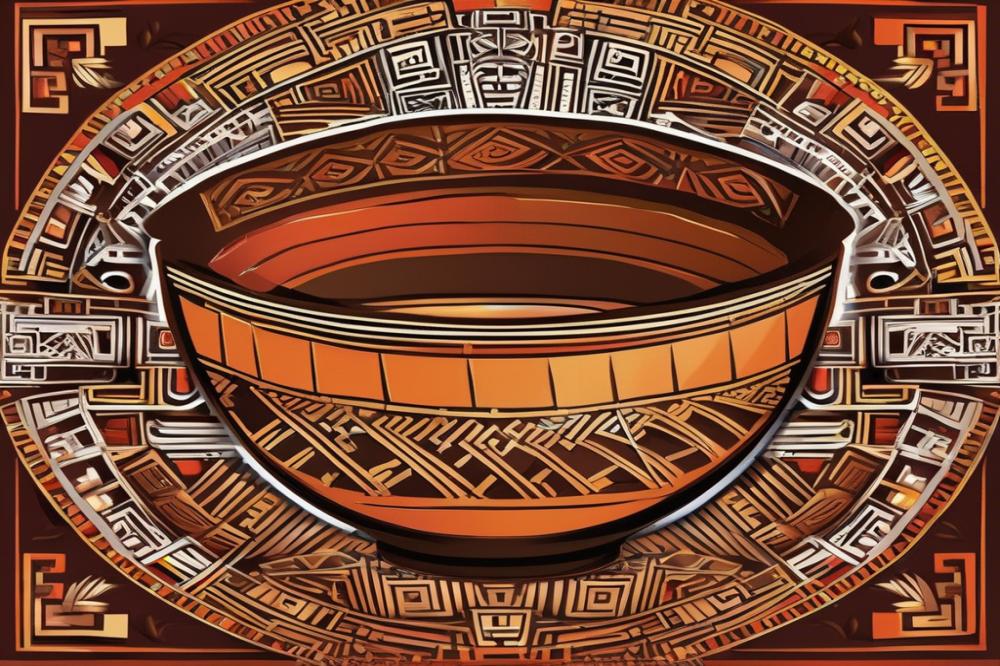Modern-Day Mexico-techniques-and-traditions”>chocolate consumption in Mexico: trends, preferences, and Popularity
Chocolate has long played a vital role in Mexican culture. Its origins trace back to ancient civilizations, where cacao beans were invaluable. They were not just a food source, but also a currency and a sacred offering. The rich history of chocolate in Mexico is filled with stories of ritual, celebration, and culinary artistry.
Today, understanding modern chocolate consumption goes beyond merely enjoying sweet treats. It provides insights into how consumer habits have evolved. The growing interest in health-conscious options has shifted preferences toward dark chocolate. Furthermore, the demand for artisanal chocolate has surged, as many seek out unique flavors and local brands. Chocolatiers are now blending traditional methods with contemporary tastes.
The purpose of this article is to delve into current trends regarding chocolate in Mexico. We’ll examine preferences among consumers and discuss the popularity of various products, such as chocolate bars and beverages. Trends highlight a movement towards ethical sourcing and sustainability, reflecting a deep-rooted connection with cacao and its origins. Understanding these shifts helps industry stakeholders navigate this delicious landscape.
Historical Background of Chocolate in Mexico

Origin of Cacao in Mesoamerica
Cacao holds a special place in the heart of Mexico’s history. The ancient Mesoamerican civilizations first cultivated cacao over 3,000 years ago. This plant was more than just a food source; it was sacred. The Olmecs, Maya, and Aztecs all valued cacao beans highly. They used it in rituals and celebrations. Cacao trees thrived in the humid rainforest, providing beans that became integral to culture. Chocolatl, a frothy drink made from cacao, was enjoyed by many. It symbolized wealth and power. Cacao beans were even used as currency, showcasing its significance in trade and everyday life.
Role of Chocolate in Ancient Cultures
Chocolate was more than a delicious treat in these ancient societies. It played a vital role in social structures. Nobles and priests often consumed the beverage, reflecting their status. The Maya believed chocolate had divine properties. They associated it with the gods of fertility and agriculture. Marriage ceremonies frequently featured cacao drinks, highlighting its importance in relationships. Additionally, cacao appeared in various religious rituals. It symbolized life and vitality for many populations. The Aztecs regarded chocolate as a luxury item. Only the elite could afford it, creating a sense of exclusivity.
European Influence on Chocolate after Colonization
The arrival of Europeans changed how chocolate was consumed. In the early 16th century, Spanish explorers brought cacao beans back to Spain. They introduced chocolate to their royal courts, where it became fashionable. Sweeteners like sugar and cinnamon were added, transforming the traditional bitter beverage. Gradually, chocolate spread across Europe, becoming popular among the wealthy. By the 17th century, chocolate houses began to appear in cities like London and Paris. These establishments catered to the growing demand. Artisanal chocolate emerged, with new recipes and presentation styles that captivated consumers. Over time, chocolate bars gained popularity, making the treat accessible to more people. Dark chocolate, in particular, desired for its rich flavor, began to capture imaginations worldwide.
With these shifts, European tastes heavily influenced Mexican chocolate as well. Traditional recipes adapted, blending old traditions with new preferences. This interaction shaped modern-day consumer habits around chocolate consumption in Mexico. People now enjoy both traditional chocolate beverages and contemporary chocolate bars, reflecting a rich tapestry of flavors and experiences.
Current Trends in Chocolate Consumption

Over the last few years, there has been a notable rise in artisanal chocolate brands across Mexico. Many small businesses are crafting chocolate bars using high-quality cacao. These brands often focus on traditional methods, which appeal to consumers seeking authenticity. Products like these offer a unique taste that mass-produced chocolates can’t replicate.
Dark chocolate is gaining immense popularity, especially among health-conscious individuals. Research suggests that it offers several health benefits, including improved heart health and lower blood pressure. Many people now prefer it over milk chocolate, which often contains higher sugar levels. This preference aligns with a growing awareness of dietary choices.
A surge in chocolate beverages is also evident, with hot chocolate leading the way. Street vendors commonly sell rich and creamy Mexican-style hot chocolate. Consumers are also experimenting with cold chocolate drinks. These refreshing options are especially popular in warmer months, attracting those looking for a delicious way to cool off.
Trends show that consumer habits are shifting towards organic and ethically sourced products. More shoppers are becoming conscious about where their chocolate comes from. They want to support producers who value sustainable practices. These preferences highlight a connection between consumers and the origins of their favorite treats.
Mexican chocolate, recognized for its distinct flavor profile, is becoming a staple in many households. The merging of tradition with modern tastes is evident everywhere you look in eateries and cafes. People are now more eager to explore diverse flavors and types of chocolate than ever before.
Consumer Preferences in Mexico
Recent trends show a notable shift towards premium and organic chocolate products among consumers. People are increasingly seeking out artisanal chocolate brands that feature quality ingredients. This desire for better products reflects a growing interest in the origins of cacao used in these treats.
Another important aspect is the demand for ethical sourcing and sustainability. Many consumers want to know how the cacao is produced. They look for certifications that guarantee fair labor practices and environmentally friendly farming methods. This focus on sustainability influences purchasing decisions at grocery stores and markets.
Mexican chocolate varieties hold a special place in consumer hearts. Traditional recipes, often passed down through generations, highlight local flavors. Beverages made from cacao and spices are especially popular during festive seasons. Chocolate bars infused with traditional ingredients also attract buyers looking for something distinct.
Dark chocolate has gained traction as a preferred choice for its rich flavor and health benefits. As consumers become more health-conscious, they gravitate towards options that contain higher cacao content. This trend showcases a change in consumer habits, moving away from overly sweetened treats.
The popularity of local brands cannot be understated. Support for businesses that highlight regional ingredients fosters a sense of community. Enthusiastic consumers take pride in enjoying products that celebrate their heritage. Such preferences illustrate how chocolate is not just a treat but also a connection to culture.
Popular Chocolate Products in Mexico
Overview of Chocolate Bars and Their Variations
Chocolate bars are hugely popular in Mexico today. Varieties range from milk chocolate to rich dark chocolate. Many brands now cater to different tastes, offering flavors like chili, caramel, and even sea salt. Consumers have a growing preference for dark chocolate. It offers a more intense flavor and potential health benefits. Brands like Nestlé and Hershey coexist with smaller, artisanal companies. These smaller firms are gaining attention for their attention to quality and local ingredients.
Unique Aspects of Mexican Chocolate Products
Mexican chocolate stands out due to its flavors and textures. Many products incorporate traditional ingredients such as cinnamon and vanilla, making them distinct. The use of cacao from local farms is significant. This not only supports local economies but also creates a special taste profile. Artisan chocolates frequently employ stone-ground methods, resulting in a grainier texture. Consumers increasingly admire this craftsmanship and authenticity. The popularity of ethically sourced chocolate also plays a role in purchasing decisions.
Evolution of Traditional Chocolate-Based Beverages
The classic chocolate beverage in Mexico, known as “champurrado,” has evolved over time. Traditionally, it was made with masa, water, and chocolate, often consumed during holidays. Today’s versions often combine rich chocolate and milk for a creamier experience. Coffee shops and cafes have introduced modern twists on this classic drink. Various flavors, from mocha to spiced variations, attract younger consumers. These changes reflect shifting consumer habits. The renewed interest in hot chocolate beverages demonstrates a blend of tradition and contemporary taste preferences.
Consumer Habits and Buying Behavior
The impact of social media has reshaped how people choose chocolate. Many brands use platforms like Instagram and TikTok to show off their products. Visually appealing images and videos grab attention quickly. Influencers often review chocolate bars or artisanal chocolate products, sometimes sparking trends overnight. This instant engagement drives consumers to select items based on their online presence. Hashtags like #ChocolateLover can quickly gain momentum, influencing purchasing habits.
Cultural events and festivals play significant roles in determining what types of chocolate people buy. In Mexico, various celebrations feature traditional sweets, including classic chocolate beverages. During Día de los Muertos and other festivities, families often prepare special treats that showcase local flavors. These events highlight the deep-rooted connection between culture and cacao. Hence, when purchasing, consumers tend to seek out items that reflect their heritage.
General trends show a rise in the popularity of dark chocolate and artisanal options. Health-conscious individuals often prefer dark varieties for their potential benefits. Many people pay close attention to the amount of sugar in chocolate products. In contrast, younger consumers frequently look for playful flavors or combinations. As a result, brands have begun to experiment more with ingredients. This aspect encourages new experiences in the chocolate market.
Shifts in preferences can also be seen in packaging and convenience. Ready-to-eat chocolate bars remain popular, especially those with unique combinations. Even specialty shops focus on providing products that cater to modern tastes. Consumers often want both quality and value in their choices. Shopping experiences now include tasting events, making it easier to try something new.
Final Thoughts
In recent years, the chocolate landscape in Mexico has undergone notable changes. Consumers are now more aware of the origins and quality of their chocolate. This shift is fueled by a greater demand for artisanal and premium products. Younger generations, in particular, are leaning towards unique flavors and healthier options. Overall, the modern palate seeks depth beyond the traditional chocolate bar.
Market trends indicate a rise in organic and ethically sourced chocolates. Many people are interested in sustainability and transparency in production. Those preferences reflect a broader global movement towards responsible consumption. In Mexico, brands that embrace these values are attracting a loyal customer base. Additionally, the local appreciation for traditional chocolate has not vanished. It still holds a special place in recipes and cultural festivities.
Looking ahead, the chocolate industry in Mexico may see further evolution. Innovations in flavor profiles might become more mainstream. Plant-based alternatives could also gain traction in response to dietary shifts. As health consciousness increases, companies will need to adapt. Traditional Mexican ingredients like chili, cinnamon, and nuts might reemerge in modern offerings as well.
Understanding these trends is crucial for brands. They must engage creatively to remain relevant in a quickly changing market. Responsiveness to consumer demands will shape the industry’s future. Collaborations between local artisans and larger companies could create exciting new products. The journey of chocolate in Mexico continues to unfold, rich with possibilities.



